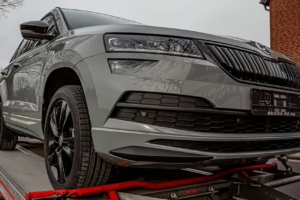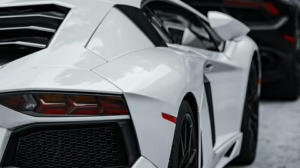VW Golf 2: A Deep Dive into the Iconic Hot Hatch
The Volkswagen Golf has cemented its place in automotive history as one of the most enduring and beloved compact cars. Among its iterations, the second-generation Golf, known as the VW Golf 2, holds a special place in the hearts of enthusiasts and casual drivers alike. Launched in 1983 and produced until 1992, the Golf 2 combined practicality with spirited performance, making it a quintessential example of the ‘hot hatch’ phenomenon that redefined the automotive landscape during the 1980s.
Design and Evolution
The Golf 2 set itself apart from its predecessor with a more robust and angular design. While the original Golf boasted a charming, rounded silhouette, the second generation adopted a boxier shape, giving it a more assertive and confident presence on the road. Its design, crafted by the legendary Volkswagen stylist Hartmut Warkus, featured broader shoulders, a longer hood, and a taller roofline, which translated into improved interior space and practicality.
The Golf 2 was available in various trims and body styles, including a three-door and five-door hatchback. The design was both simple and functional, with straightforward lines that exuded an air of sophistication. The interior reflected a similar ethos, prioritizing ergonomics and practicality over extravagant detailing. Drivers appreciated the Golf 2’s straightforward dashboard layout, well-placed controls, and comfortable seating, making it an excellent choice for daily commuting as well as spirited weekend drives.
Performance and Variants
At the heart of the Golf 2’s appeal was its thrilling range of engine options, showcasing Volkswagen’s commitment to performance without sacrificing fuel efficiency. The introductory models featured a 1.6-liter four-cylinder engine, producing a modest 74 hp, while the more performance-oriented versions soon followed. The GTI variant, launched in 1984, was particularly notable for its fiery demeanor. Equipped with a 1.8-liter engine that pushed out 112 hp, the GTI quickly gained a reputation as one of the best hot hatches of its time.
The Golf 2 GTI featured a sport-tuned suspension, wider tires, and distinctive styling cues like flared wheel arches and a unique interior with sport seats. Its engaging handling, coupled with a light and responsive chassis, made it a favorite among driving enthusiasts. It was a car that encouraged spirited driving, with a sharpness in cornering that belied its family hatchback classification.
As the 1980s progressed, Volkswagen expanded the Golf 2 lineup with additional performance models, such as the 1.8 16V, which introduced a twin-cam engine producing 139 hp, further enhancing the car’s reputation as a hot hatch. It wasn’t just raw power that made the Golf 2 special; it was the balance of all-around capability, comfort, and fun.
Cultural Impact and Legacy
The VW Golf 2 was not just a car; it became a cultural icon. It represented a generation’s desire for accessible performance—offering the thrill of speed without the burden of high running costs. The rise of the hot hatch movement during the 1980s saw the Golf 2 compete with rivals like the Ford Escort XR3i and the Peugeot 205 GTi, and it stood tall amongst its competitors with its combination of quality, reliability, and performance.
Its popularity extended beyond Europe, with the Golf 2 capturing attention in markets around the world, including North America, where it rendered a lasting impact on the hatchback segment. The Golf 2’s appeal was undoubtedly bolstered by its advertising campaigns, which highlighted the car not just as a mode of transportation but as a lifestyle choice, resonating particularly well with young drivers.
The Enthusiast Community
Today, the VW Golf 2 enjoys a robust enthusiast community, with many members dedicated to preserving and restoring these classic hot hatches. The aftermarket support for the Golf 2 remains strong, offering a myriad of modifications that enhance both performance and aesthetics. From turbocharging projects to suspension upgrades and cosmetic changes, enthusiasts cherish their Golf 2s as they explore the boundaries of personalization. Classic car shows and enthusiast meets often feature these models, showcasing their enduring charm and the passion of those who own them.
The Enduring Legacy
As Volkswagen continues to develop its modern iterations of the Golf brand, the second generation serves as a benchmark—a reminder of what made the Golf a household name. The principles of fun, practicality, and performance remain at the core of the Golf ethos. While the automotive landscape has shifted significantly, the spirit of the Golf 2 lives on in the hearts of enthusiasts and casual drivers alike.
In conclusion, the VW Golf 2 is more than just a car; it’s a piece of automotive history. Its combination of practicality, performance, and lasting appeal has earned it a unique place in the hearts of millions, solidifying its legacy as one of the defining hot hatches of all time. Whether you’re a nostalgic owner or a newcomer to the world of classic cars, the Golf 2 remains a timeless symbol of what a compact car can—and should—be.
[modern_footnote_source_link]

























Add Comment